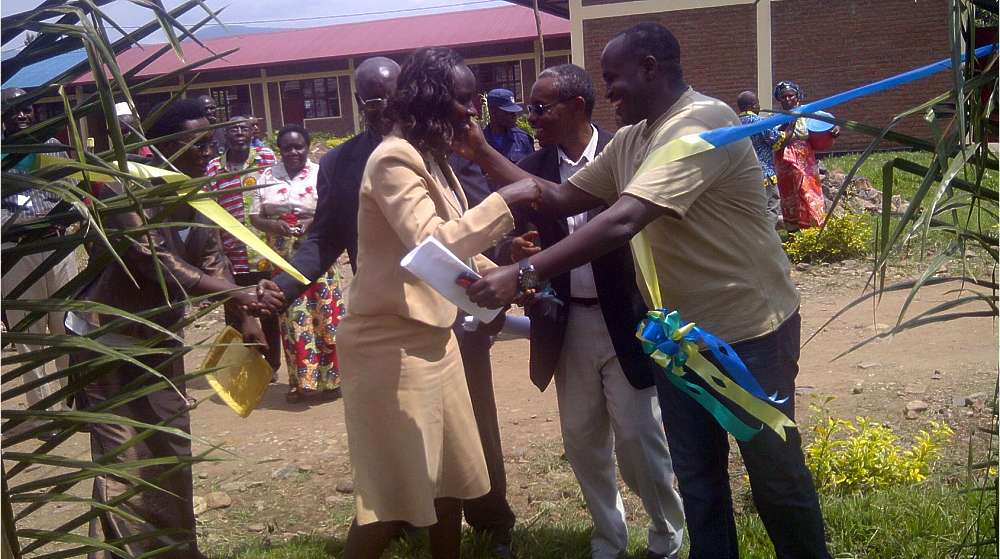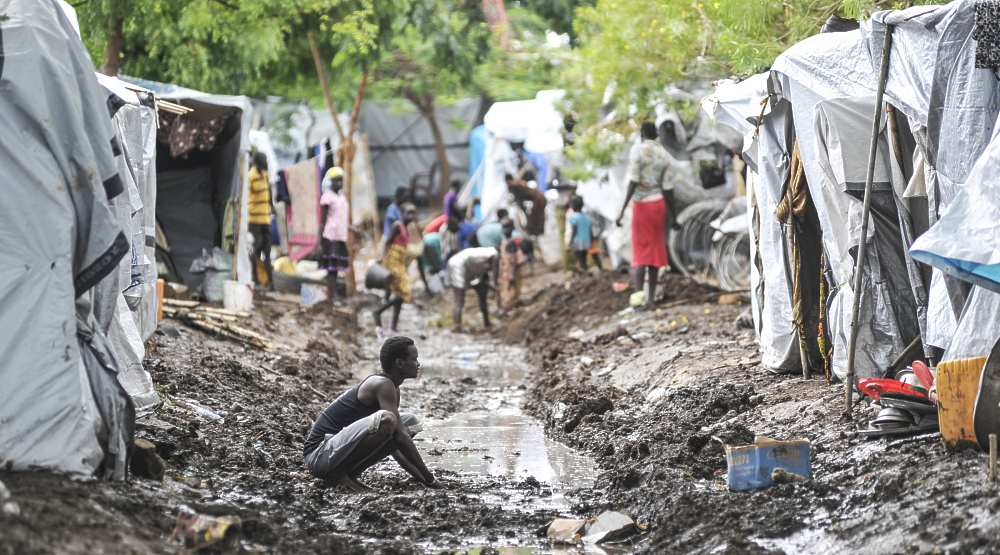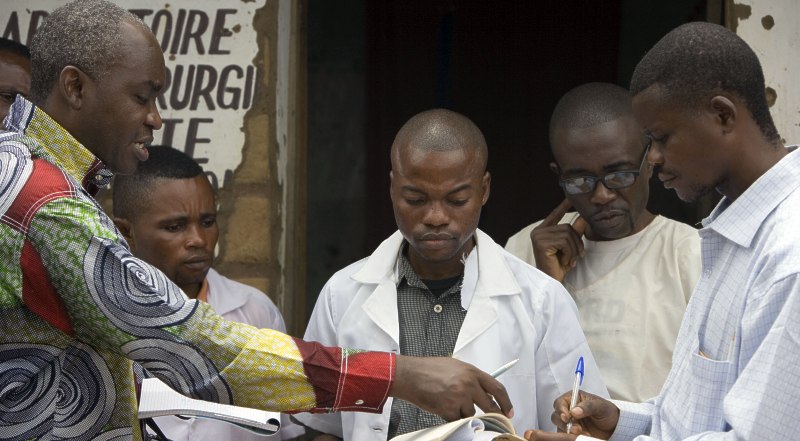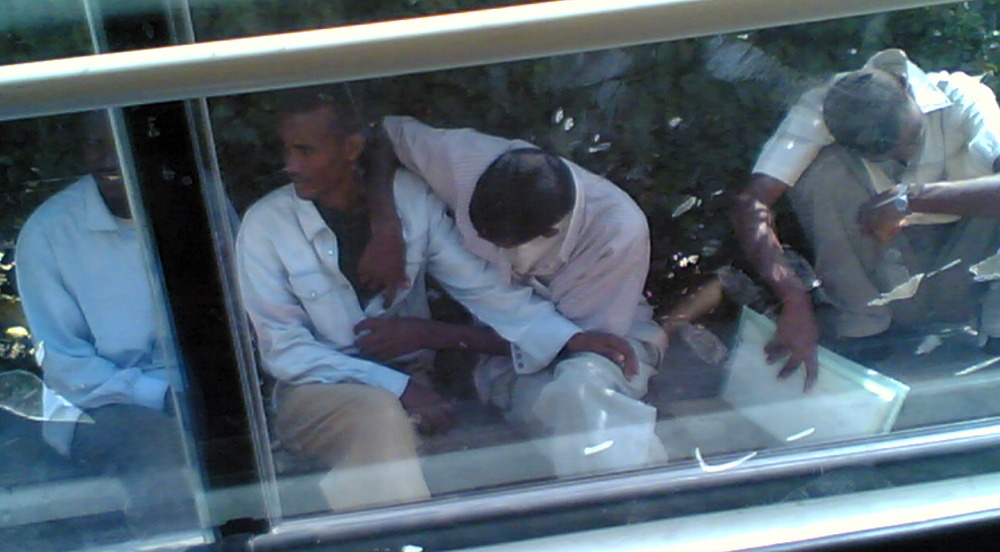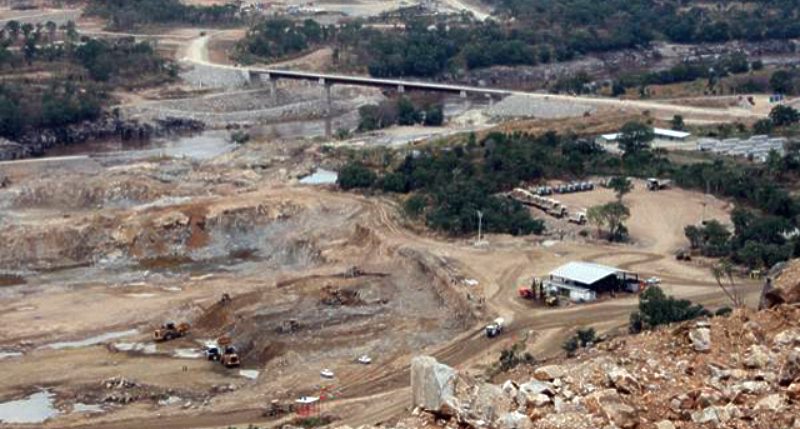|
Cameroon Economy - Development Cameroon's economic and financial performance indicators; 2000 - The International Monetary foundation (IMF) in September 1999 assessed Cameroon's economic and financial performance to have "a good record of performance under the first annual ESAF program continued under the second, despite the adverse impact of a sharp deterioration in the terms of trade in the first half of 1998/99. Almost all quantitative and structural performance criteria and benchmarks for the year were met. Real GDP growth for 1998/99 was revised downward from 5 1/4% to 4½ %, and the annual average national consumer price inflation was contained at 2.9 %." The medium-term strategy under the program aims at restoring external and internal viability, bringing the economy onto a sustainable growth path, and substantially reducing poverty. Within this framework, the main macroeconomic objectives for 1999/2000 are to limit inflation to 2 % and contain the external current account deficit to 3½ % of GDP. Real GDP growth is projected at 4.8%. The medium-term growth prospects depend crucially on the success of increasing investment, including direct foreign investment; raising the domestic budgetary revenue effort; strengthening expenditure management; improving governance and accountability; rebuilding the country’s infrastructure; and implementing efficiency-enhancing structural reforms while reinforcing external competitiveness. The program2 also emphasizes the completion of reform measures already under way, thus to begin producing tangible results that benefit the population at large. The key budgetary objectives are to achieve a primary surplus of 5.2 % of GDP and thereby reduce the overall fiscal deficit to 2.9 % of GDP, excluding grants. The authorities intend to strengthen non-oil revenue by improving the customs and tax administration, to combat fraud, to broaden the tax base, and to strengthen value-added tax (VAT) collection. At the same time, all export taxes have been eliminated except those on forestry products. Structural reforms will focus on consolidating and deepening the ongoing reforms in agro-industry; public utilities; and the petroleum, transport, and financial sectors. These reforms are essential for creating a favorable environment for private sector activity and for safeguarding Cameroon’s external competitiveness. But there is a need to remain vigilant and bring about the successful conclusion of the privatization operations currently under way while ensuring the independence and integrity of the newly created regulatory agencies. Improving transparency and fighting corruption are indispensable in enhancing the effectiveness of government operations and in stimulating private investment. The government is aware of the fact that it is critical to proceed vigorously to tackle issues of economic governance and transparency as a core component of the reform program. Thus the promotion of good governance is at the center of many of the reforms being undertaken by the government, particularly in the areas of public expenditure management, the privatization of public enterprises, the liberalization of markets, and the introduction of transparency and accountability into public sector activities. Social Issues Cameroon’s objectives in the social area, in general, and in poverty alleviation, in particular, are to be achieved through higher economic growth combined with improvements in quality and volume of spending in the primary health and education sectors, and through policies to ensure access to safe water and to generic drugs. These policies would reverse the worsening trend of recent years in education indicators, and more broadly, raise the low level of social indicators. The strategies for the health and education sectors, which are to be elaborated next year will form a critical element in the government’s fight against poverty and will concentrate on establishing greater regional equality and greater accountability in the distribution and use of resources. In addition, the rural poor are to benefit from investment in roads and the measures to reduce transport costs, which should also enhance competitiveness and thus help to expand agricultural production and exports. The Challenge Ahead Cameroon’s performance during the first two annual ESAF-supported programs marks a major departure from the past record of performance and economic decline. This record of performance notwithstanding, more will be required over the next few years for Cameroon to rebuild its physical and institutional infrastructure and to create the conditions for sustainable, private-sector-led growth and durable poverty alleviation, while asserting its leading role in the subregion. To that end, the continued effort of the donor community in providing concessional financing and debt alleviation will be crucial. Some Economic Indicators, 1995/96-2001/02
By staff writer © afrol News
Current afrol News Top Stories
| |||||||||||||||||||||||||||||||||||||||||||||||||||||||||||||||||||||||||||||||||||||||||||||||||||||||||||||||||||||||||||||||||||||||||||||||||||||||||||||||||||||||||||||||||||||||||||||||||||||||||||||||||||||||||||||||||||||||||||||||||||||||||||||||||||||||||||||||||||||||||||||||||||||||||||||||||||||||||||||||||||||||||||||||||||||||||||||||||||||||||||||||||||||||||||||||||||||||||||||||||||||||||||||||||||||||||||||||||||||||||||||||||||||||||||||||||||||||||||||||||||||||||||||||||||||||||||||||||||||||||||||||||||||||||||||||||||||||||||||||||||||||||||||||||||||||||||||||||||||||||||||||||||||||||||||||||||||||||||||||||||||||||||||||||||||||||||||||||||||||||||||||||||||||||||||||||||||||||||
front page
| news
| countries
| archive
| currencies
| news alerts login
| about afrol News
| contact
| advertise
| español
©
afrol News.
Reproducing or buying afrol News' articles.
You can contact us at mail@afrol.com



